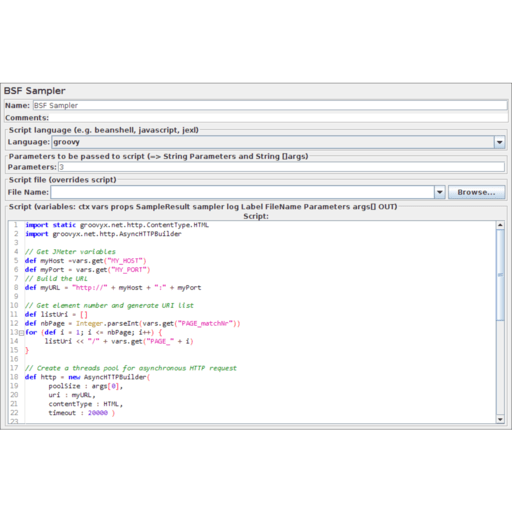
The “input” part tells Logstash where to find the JMeter results file. The Logstash configuration is kind of funky, but there’s not much to it. The second part is that Elasticsearch needs a type mapping so it understands the data types of the incoming JSON that Logstash will be sending to it. First, Logstash needs to know about the results.csv file and where to send the log data. There are two steps to configuring Logstash. It also needs to be able to get to Elasticsearch over HTTP. It will run on the same machine as your test client box (or on a box with file access to the results.csv file that JMeter is going to create). You want your Apache JMeter timestamp to match the default date format in Elasticsearch. JSONTEMPLATE_ROOT=/Users/jpotts/Documents/code/es-test/tests/jsontemplatesĬSVDATA_ROOT=/Users/jpotts/Documents/code/es-test/tests/data The Apache JMeter user.properties file is used to specify what gets written to results.csv. The results.csv file will get fed to Logstash and ultimately Elasticsearch so it can be reported on by Kibana. opt/apache/jmeter/apache-jmeter-2.11/bin/jmeter -n -t Basic\ Elasticsearch\ Test.jmx -l. For example, this runs my test named “Basic Elasticsearch Test.jmx” from the command line and writes the results to results.csv:

Step One: Configure Apache JMeter to Create a CSV FileĪnother recommendation in my last post was to use the Apache JMeter GUI only for testing and to run your load test from the command line. It is really quite easy to use ELK to create a dashboard that aggregates and displays Apache JMeter test results in realtime. Kibana is a tool for defining dashboards that contain charts, graphs, and tables based on data stored in Elasticsearch. Logstash is a log parser that can send log data to various outputs. Elasticsearch is a distributed, scalable search engine and document oriented NoSQL store. It’s called ELK and it stands for Elasticsearch, Logstash, and Kibana. Our load test was running against Elasticsearch which just happens to have a pretty nice tool set for ingesting, analyzing, and reporting on any kind of data you might find in a log file. So what’s the best way to analyze your load test results? One of my recommendations was to turn off all of the Listeners so that valuable test client resources are not wasted on aggregating test results.

#Apache jmeter 2.11 download how to#
In my last blog post I showed how to use Apache JMeter to run a load test against Elasticsearch or anything with a REST API.


 0 kommentar(er)
0 kommentar(er)
